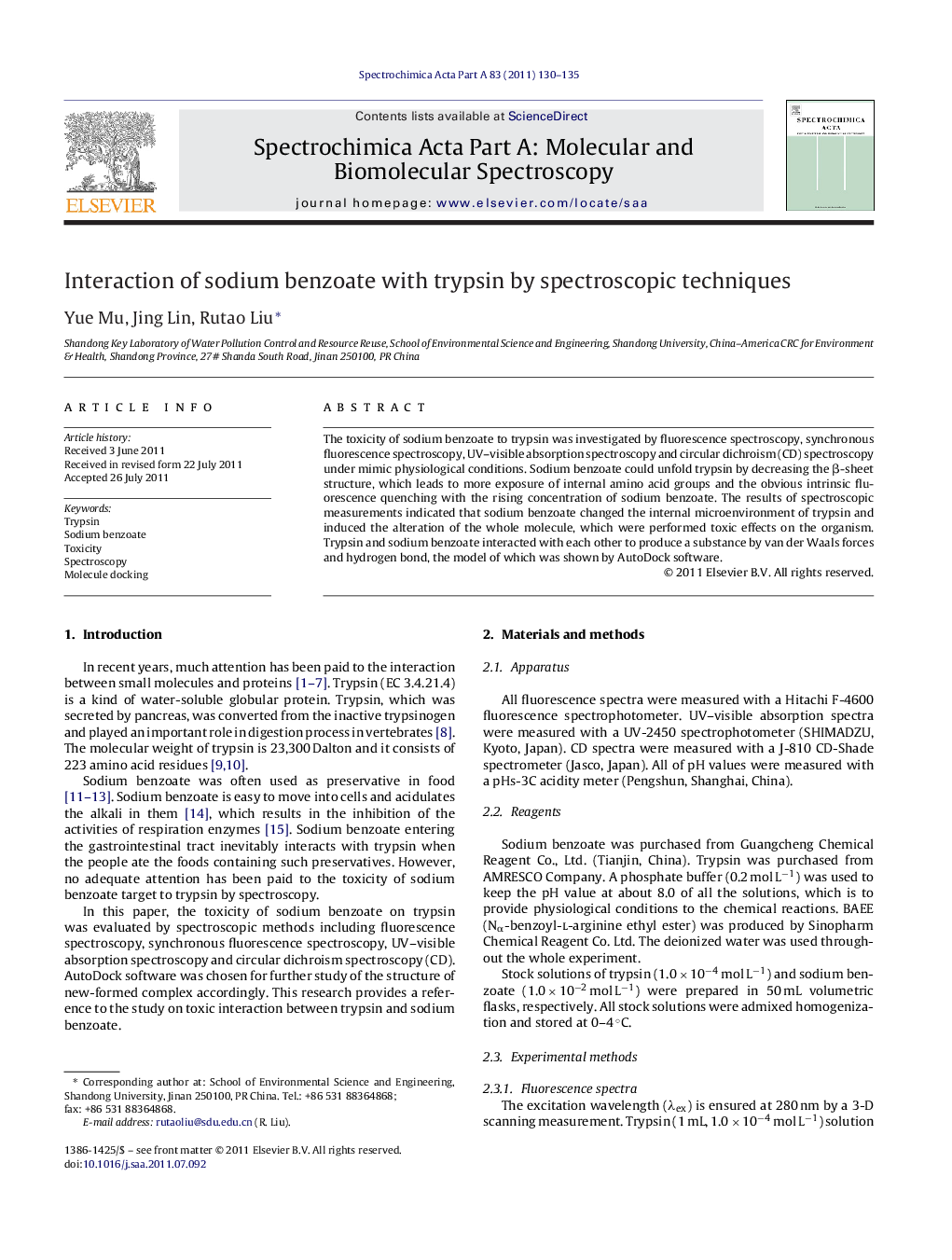| Article ID | Journal | Published Year | Pages | File Type |
|---|---|---|---|---|
| 1235158 | Spectrochimica Acta Part A: Molecular and Biomolecular Spectroscopy | 2011 | 6 Pages |
The toxicity of sodium benzoate to trypsin was investigated by fluorescence spectroscopy, synchronous fluorescence spectroscopy, UV–visible absorption spectroscopy and circular dichroism (CD) spectroscopy under mimic physiological conditions. Sodium benzoate could unfold trypsin by decreasing the β-sheet structure, which leads to more exposure of internal amino acid groups and the obvious intrinsic fluorescence quenching with the rising concentration of sodium benzoate. The results of spectroscopic measurements indicated that sodium benzoate changed the internal microenvironment of trypsin and induced the alteration of the whole molecule, which were performed toxic effects on the organism. Trypsin and sodium benzoate interacted with each other to produce a substance by van der Waals forces and hydrogen bond, the model of which was shown by AutoDock software.
Graphical abstractFigure optionsDownload full-size imageDownload as PowerPoint slideHighlights► Trypsin can interact with sodium benzoate and generate a new-formed complex. ► The main force for the complex are hydrogen bond and van der Waals’ forces. ► We model the structure of the new complex. ► Sodium benzoate changes the structure of trypsin.
